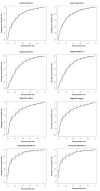Development of a classification scheme for disease-related enzyme information
- PMID: 21827651
- PMCID: PMC3166944
- DOI: 10.1186/1471-2105-12-329
Development of a classification scheme for disease-related enzyme information
Abstract
Background: BRENDA (BRaunschweig ENzyme DAtabase, http://www.brenda-enzymes.org) is a major resource for enzyme related information. First and foremost, it provides data which are manually curated from the primary literature. DRENDA (Disease RElated ENzyme information DAtabase) complements BRENDA with a focus on the automatic search and categorization of enzyme and disease related information from title and abstracts of primary publications. In a two-step procedure DRENDA makes use of text mining and machine learning methods.
Results: Currently enzyme and disease related references are biannually updated as part of the standard BRENDA update. 910,897 relations of EC-numbers and diseases were extracted from titles or abstracts and are included in the second release in 2010. The enzyme and disease entity recognition has been successfully enhanced by a further relation classification via machine learning. The classification step has been evaluated by a 5-fold cross validation and achieves an F1 score between 0.802 ± 0.032 and 0.738 ± 0.033 depending on the categories and pre-processing procedures. In the eventual DRENDA content every category reaches a classification specificity of at least 96.7% and a precision that ranges from 86-98% in the highest confidence level, and 64-83% for the smallest confidence level associated with higher recall.
Conclusions: The DRENDA processing chain analyses PubMed, locates references with disease-related information on enzymes and categorises their focus according to the categories causal interaction, therapeutic application, diagnostic usage and ongoing research. The categorisation gives an impression on the focus of the located references. Thus, the relation categorisation can facilitate orientation within the rapidly growing number of references with impact on diseases and enzymes. The DRENDA information is available as additional information in BRENDA.
Figures





References
Publication types
MeSH terms
LinkOut - more resources
Full Text Sources
Medical

